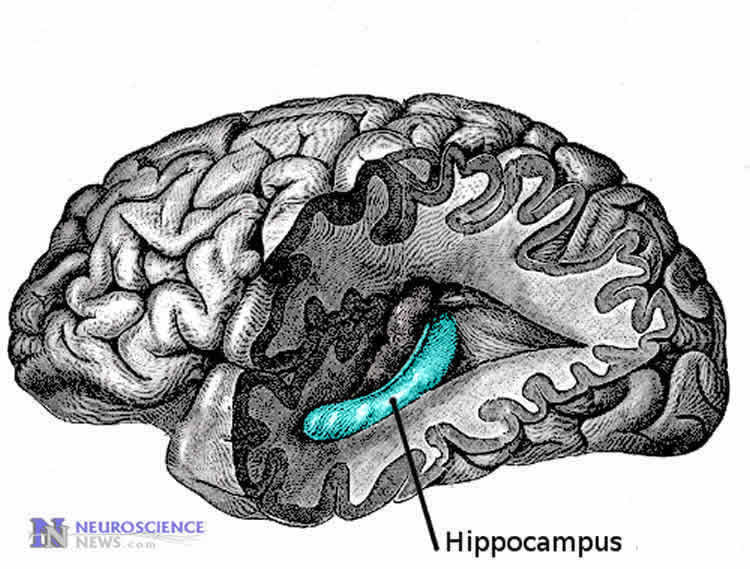A team of researchers has discovered that differences in the types of memories we have influence the nature of our future encounters. Their findings show how distinct parts of the brain, underlying different kinds of memories, also influence our attention in new situations.
“We’ve long understood there are different types of memories, but what these findings reveal are how different kinds of memories can drive our attention in the future,” explains Elizabeth Goldfarb, the study’s lead author and a doctoral candidate in NYU’s Department of Psychology.
It’s been established that the types of memories we have include episodic memories—characterized by our recollections of the contextual details of life events, such as remembering the layout and location of objects in a familiar room —as well as “habitual” or “rigid” memories. The latter are frequently invoked in our daily lives and are reflexive in nature—for instance, if you take a right turn at a stop sign you pass on your way to work everyday, and you then habitually take a right instead of a left even when you are not going to work.
Previous research has shown that these different types of memories depend on different brain systems, with the hippocampus important for episodic memories and the striatum mediating habitual memories. Less understood, however, are the neurological processes by which these different kinds of memories can function as guides of attention to novel situations.
To explore this question, the researchers conducted a series of experiments in which both episodic and habitual memories could inform future attention. During these tasks, participants’ brain activity was observed using functional magnetic resonance imaging (fMRI).
One set of trials relied on “contextual cueing,” which is linked to episodic memories. Here, the study’s subjects looked for target (a rotated “T”), mixed among other distracting visuals, on a computer screen, then pressed a button once they found it, indicating the T’s direction. The subjects did not know that some of these computer screens repeated, allowing them to use their memory for that familiar context—like their memory for a familiar room—to guide their attention to the target. Not surprisingly, the results showed that context-guided attention was linked to activity in the brain’s hippocampus.
A second set, by contrast, employed a “stimulus-response” mechanism—one that models our habitual memory process; for instance, when that frequently encountered stop sign serves as a stimulus to take a right turn to get to work. Here, the shapes on the screen (the “T” and distracting visuals) were presented in a different color. This color served as the “stimulus,” analogous to the stop sign. Over time, subjects learned that, when they saw this color, they should look in a particular part of the screen for the “T” and make the appropriate response.

But unlike the context-cued trials, in which the hippocampus was active, the striatum was at work during the stimulus-response trials. While the striatum has long been linked to forming stimulus-response associations, this finding reveals its role in guiding attention.
“Even though subjects had no idea that they were forming these memories, the fact that they performed better when contextual or habitual cues were present shows us that their attention was driven by memory,” observes Goldfarb. “What we found here is that each of these types of memory can inform your future behavior.”
The other co-authors of the study, which appears in the journal Neuron, are Elizabeth Phelps, a professor in NYU’s Department of Psychology, and Marvin Chun, a professor in Yale University’s Department of Psychology.
Funding: The study was supported, in part, by a grant from the National Institutes of Health (1R01MH097085) and a National Science Foundation Graduate Research Fellowship.
Source: James Devitt – NYU
Image Source: The image is in the public domain
Original Research: Abstract for “Memory-Guided Attention: Independent Contributions of the Hippocampus and Striatum” by Elizabeth V. Goldfarb, Marvin M. Chun, and Elizabeth A. Phelps in Neuron. Published online January 14 2016 doi:10.1016/j.neuron.2015.12.014
Abstract
Memory-Guided Attention: Independent Contributions of the Hippocampus and Striatum
Highlights
•Multiple memory systems concurrently and implicitly facilitate attention
•The striatum predicts attention benefits from reinforcement learning
•The hippocampus predicts attention benefits from implicit context memory
•The hippocampus quickly guides attention, while the striatum is slower
Summary
Memory can strongly influence how attention is deployed in future encounters. Though memory dependent on the medial temporal lobes has been shown to drive attention, how other memory systems could concurrently and comparably enhance attention is less clear. Here, we demonstrate that both reinforcement learning and context memory facilitate attention in a visual search task. Using functional magnetic resonance imaging, we dissociate the mechanisms by which these memories guide attention: trial by trial, the hippocampus (not the striatum) predicted attention benefits from context memory, while the striatum (not the hippocampus) predicted facilitation from rewarded stimulus-response associations. Responses in these regions were also distinctly correlated with individual differences in each type of memory-guided attention. This study provides novel evidence for the role of the striatum in guiding attention, dissociable from hippocampus-dependent context memory.
“Memory-Guided Attention: Independent Contributions of the Hippocampus and Striatum” by Elizabeth V. Goldfarb, Marvin M. Chun, and Elizabeth A. Phelps in Neuron. Published online January 14 2016 doi:10.1016/j.neuron.2015.12.014







